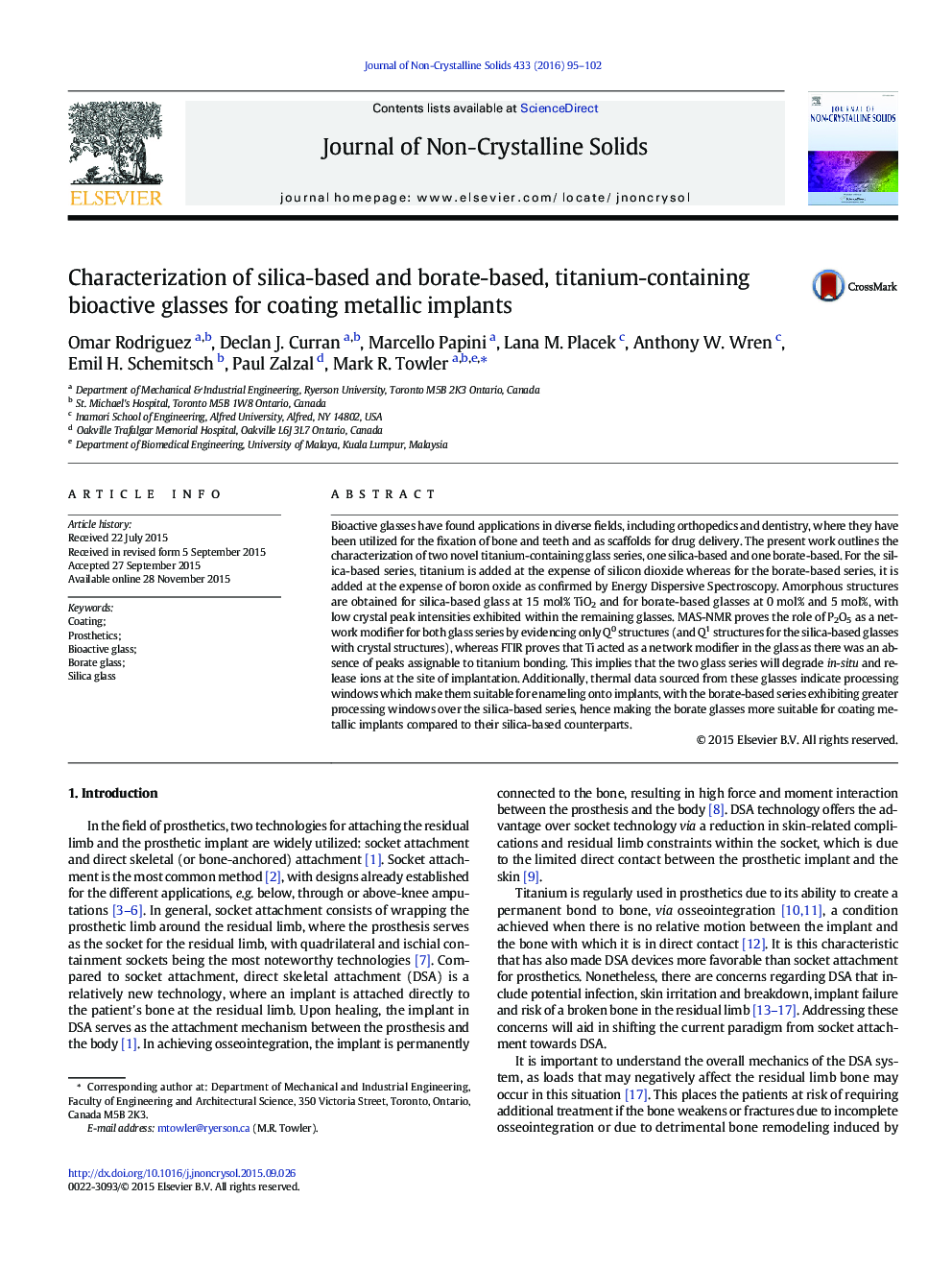| کد مقاله | کد نشریه | سال انتشار | مقاله انگلیسی | نسخه تمام متن |
|---|---|---|---|---|
| 1480371 | 1510412 | 2016 | 8 صفحه PDF | دانلود رایگان |
• Incorporation of TiO2 into silica and borate-based glasses.
• Greater processing window of borate over silica-based glasses favorable in coating.
• Glass transition temperature of borate-based glasses not influenced by TiO2 addition.
• Role of P2O5 as network modifier verified through MAS-NMR and FTIR for both series.
Bioactive glasses have found applications in diverse fields, including orthopedics and dentistry, where they have been utilized for the fixation of bone and teeth and as scaffolds for drug delivery. The present work outlines the characterization of two novel titanium-containing glass series, one silica-based and one borate-based. For the silica-based series, titanium is added at the expense of silicon dioxide whereas for the borate-based series, it is added at the expense of boron oxide as confirmed by Energy Dispersive Spectroscopy. Amorphous structures are obtained for silica-based glass at 15 mol% TiO2 and for borate-based glasses at 0 mol% and 5 mol%, with low crystal peak intensities exhibited within the remaining glasses. MAS-NMR proves the role of P2O5 as a network modifier for both glass series by evidencing only Q0 structures (and Q1 structures for the silica-based glasses with crystal structures), whereas FTIR proves that Ti acted as a network modifier in the glass as there was an absence of peaks assignable to titanium bonding. This implies that the two glass series will degrade in-situ and release ions at the site of implantation. Additionally, thermal data sourced from these glasses indicate processing windows which make them suitable for enameling onto implants, with the borate-based series exhibiting greater processing windows over the silica-based series, hence making the borate glasses more suitable for coating metallic implants compared to their silica-based counterparts.
Journal: Journal of Non-Crystalline Solids - Volume 433, 1 February 2016, Pages 95–102
